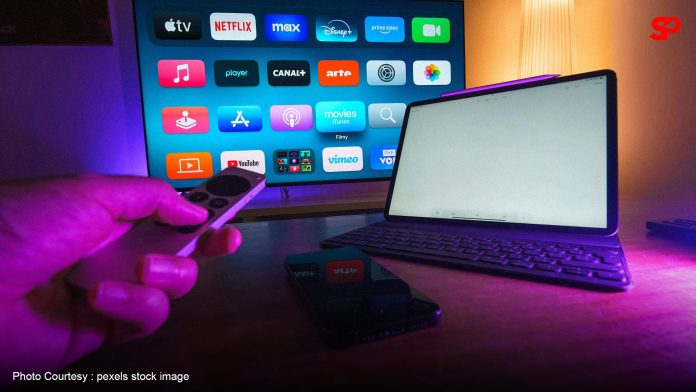By Jose Guillermo – Sunday Punch
As I sit down to write this, my TV is off, not because there’s nothing to watch, but because my phone and laptop have become my primary portals to entertainment. It is fascinating to reflect on how quickly our viewing habits have evolved. Let me take you on a little journey through my experiences with streaming services and their impact on traditional media.
I remember a time when watching TV meant sticking to a schedule. It was the early ’90s, Fridays at 7 PM meant “X-Men” was on. The routine was comforting, but if you missed an episode, there was no way to catch up unless a replay aired.
Back then, SkyCable was king. I vividly recall flipping through countless channels, only to complain there was “nothing on.” It was the golden era of prime-time TV, with big-budget shows and live events pulling in millions of viewers. But then, things began to shift.
It all started for me with Netflix. Originally a DVD rental service, Netflix transformed into a game-changer. When they launched their streaming platform, I was skeptical. “Who wants to watch shows on a computer screen?” I thought. But one lazy Sunday afternoon, I stumbled upon “Breaking Bad,” and the ability to binge-watch hooked me instantly.
Netflix offered something traditional TV could not control. No ads. No schedules. Just content, whenever I wanted it. As more streaming platforms emerged: Hulu, Amazon Prime Video, Disney+, and countless others, the traditional TV model became increasingly outdated. Why wait for a weekly episode when you could have an entire season at your fingertips?
There was also the rise of torrent websites offering free movies, sometimes even before they hit theaters. Platforms like LimeWire, FrostWire, and The Pirate Bay were infamous, and while I’ve forgotten the names of many others, I definitely used my fair share.
Traditional media did not go down without a fight. Cable networks introduced on-demand services, and broadcasters launched streaming apps. I’ve tried some of these, but they often felt like compromises, clunky interfaces and limited content. (For the record, I am still using Cignal TV!)
Live TV held onto its dominance in one area: events. Sports, award shows, and breaking news still commanded massive audiences. But even this began to erode. Streaming platforms secured rights to major sporting events. I’ve even resorted to watching Olympic basketball on Facebook Live, though it often gets taken down by Meta’s algorithms.
While the shift to streaming has been liberating, it hasn’t come without downsides. What began as a cost-saving alternative to cable is now a confusing maze of subscriptions: Netflix, Disney+, Hulu, HBO Max, Apple TV+… the list goes on. Thankfully, my Netflix subscription is shared by a generous friend.
And then there’s the fragmentation of content. Shows frequently jump from one platform to another. If you’re not subscribed to multiple apps, you might lose access to your favorite series. It’s a far cry from the simplicity of flipping through free TV or cable channels.
Looking ahead, I wonder what’s next. Will traditional TV survive? Personally, I think it will evolve rather than vanish entirely. Streaming has taught traditional media a valuable lesson: audiences crave flexibility and choice. At the same time, the oversaturation of streaming services might lead to a “cable 2.0,” where platforms bundle together.
As someone who’s witnessed this transformation firsthand, Gen X, baby! I feel a mix of excitement and apprehension. How we consume content has changed forever, we’re no longer passive viewers. We’re curators of our own entertainment experiences.
So, that’s my story. What about you? How has streaming changed your relationship with traditional media? Do you miss the old ways, or are you fully embracing this new era? Let’s talk about it, after all, we’re all part of this evolving narrative.
Follow us on Facebook: Sunday Punch on YouTube: @SundayPunch-n2v and TikTok: Sunday Punch X (formely twitter:Sunday Punch

